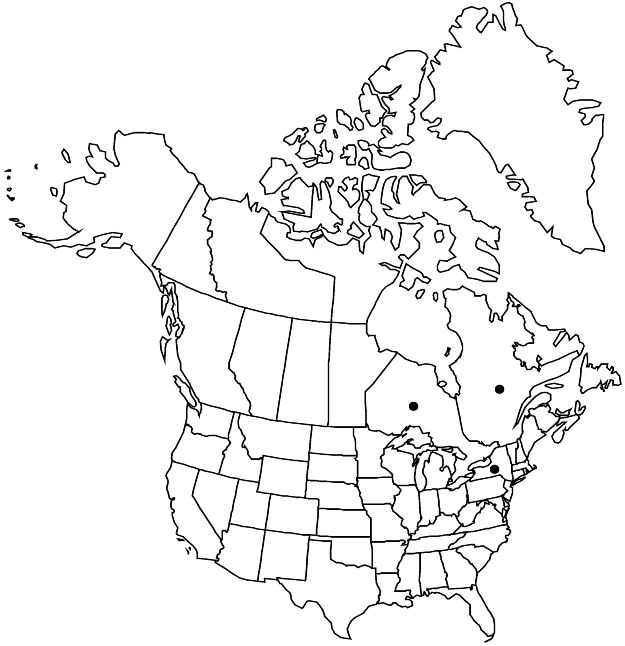Amelanchier amabilis
Rhodora 23: 48. 1921. not A. ×grandiflora Rehder 1920
Shrubs, 1–5 m. Stems 1–20, forming colonies. Leaves fully unfolded; petiole (9–)12.1–19.9(–28) mm; blade ovate-oval, (33–)41–58(–72) × (24–)30–46(–57) mm, base rounded to subcordate, each margin with (2–)6–10(–15) teeth on proximal 1/2 and (1 or)3 or 4(or 5) teeth in distalmost cm, largest teeth more than 1 mm, apex subacute, abaxial surface densely (moderately) hairy by flowering, sparsely (moderately) hairy (or glabrous) later, adaxial sparsely hairy (or glabrous) later. Inflorescences (4 or)5–8(–11)-flowered, (26–)38–57(–75) mm. Pedicels: (0 or)1 or 2(or 3) subtended by a leaf, proximalmost (9–)18–26(–33) mm. Flowers: sepals spreading to recurved after flowering, (2.4–)3.5–4.9(–6.5) mm; petals linear to narrowly spatulate, (15–)16.6–19.7(–22) × (4–)5.3–7.3(–8.6) mm; stamens (17–)19–21(–23); styles (3–)5, (2.3–)2.8–3.6(–4.2) mm; ovary apex densely hairy. Pomes dark purple or almost black, 10 mm diam. 2n = 4x.
Phenology: Flowering May–Jun; fruiting Jul–Aug.
Habitat: Open woods, rocky banks, shores, calcareous sites
Elevation: 0–300 m
Distribution

Ont., Que., N.Y.
Discussion
Amelanchier amabilis makes a conspicuous display with its relatively large flowers; in eastern North America, it resembles most closely A. sanguinea. Leaves with three or four teeth on distal cm of margin and largest teeth more than 1 mm are also useful for identification.
Amelanchier amabilis flowers at the same time as A. humilis and A. sanguinea. The authors have observed A. amabilis growing with A. sanguinea without the occurrence of putative hybrids; putative hybrids with A. arborea and A. humilis have been observed in the field.
Selected References
None.